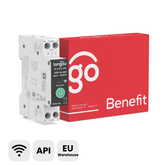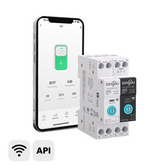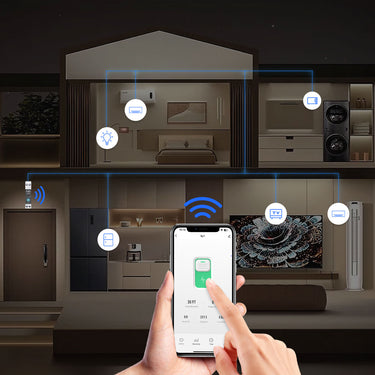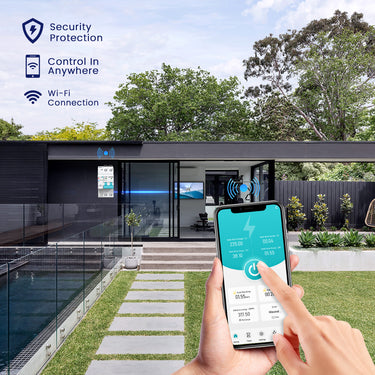Why Your Breaker Keeps Tripping
What is a Circuit Breaker?
Circuit breakers are indispensable components of modern electrical systems, designed to protect wiring and electrical devices from damage caused by overloads, short circuits, and other electrical faults. When a breaker trips, it disconnects the electrical flow to prevent potential hazards, such as fires or equipment damage.
Signs and Characteristics of Tripped Circuit Breakers
Visual Indicators:
——The breaker handle is in the “off” or “neutral” position.
——The breaker handle may appear slightly dislodged or between the “on” and “off” positions.
——Some breakers have indicator windows that show red or orange when tripped.
Symptoms of Electrical Issues:
——Loss of power in specific areas or circuits.
——Flickering lights or intermittent power interruptions.
——Appliances or outlets that stop working suddenly.
——A burning smell coming from the breaker panel or outlets.
Importance of Early Identification:
——Promptly identifying a tripped breaker can prevent potential fire hazards and electrical damage.
——Addressing the underlying issues quickly can maintain the longevity and safety of your electrical system.
resource:https://www.youtube.com/watch?v=jl8Dn3I54K8
Why Circuit Breakers Trip
Overloads:
——Explanation: Overloads occur when the electrical demand exceeds the capacity of the circuit. This can happen if too many high-power devices are running simultaneously on the same circuit.
——Common Scenarios:
Using multiple kitchen appliances (e.g., toaster, microwave, and blender) on the same outlet.
Connecting several power-hungry devices to a single power strip.
Running heavy-duty equipment on circuits not designed for high loads.
Short Circuits:
——Definition: A short circuit happens when a hot (live) wire comes into direct contact with a neutral wire, creating an unintentional pathway for current and causing excessive current flow.
——Potential Dangers: Short circuits can generate intense heat, risking fires and severe damage to wiring and devices.
——Signs:
Sparks or popping sounds from outlets or switches.
Burn marks or charred areas around electrical receptacles.
The smell of burnt plastic or insulation.
Ground Faults:
——Explanation: Ground faults occur when a hot wire touches a grounded part of a system, such as a metal wall box or appliance case. This causes current to flow via an unintended path to the ground.
——Typical Causes:
Damaged insulation on wires.
Water or moisture near electrical outlets or wiring.
Improperly installed electrical devices.
——Effects: Ground faults are dangerous and pose a significant risk of electrical shock.
Arc Faults:
——Description: Arc faults arise from loose or damaged wiring that causes electricity to jump through the air (arcing) between contacts. Arc faults can lead to electrical fires.
——Signs:
Flickering or dimming lights.
Unusual buzzing or hissing sounds from electrical outlets or switches.
Warm or hot spots on walls near outlets or switches.
How to Reset a Tripped Circuit Breaker
- Safety First:
- Ensure your hands are dry and you're standing on a dry surface. Use insulated tools if necessary.
- Turn off and unplug any appliances or devices connected to the tripped circuit.
- Locate the Breaker Panel:
- Find the circuit breaker panel, often located in basements, garages, or utility rooms.
- Open the panel door and identify the breaker that appears to be tripped. It will likely be in the middle position or show an indicator color.
- Reset the Breaker:
- Firmly push the tripped breaker to the “off” position until you hear or feel a click.
- Then, push the breaker firmly back to the “on” position. This should restore power to the circuit.
- Check the Circuit:
- After resetting the breaker, check the affected circuit by turning on lights or plugging in appliances one by one.
- Observe if the breaker trips again. If it does, there may be an underlying issue (e.g., overload, short circuit) that needs addressing.
Things to Check After Resetting:
1. Ensure that no high-wattage devices run simultaneously if an overload caused the trip.
2. Inspect for damaged wires, outlets, or appliances that may cause short circuits or ground faults.
3. Consider the possibility of a faulty breaker if it continues to trip without apparent cause.
When to Call a Professional
Some electrical issues require professional expertise. Here are signs indicating you should call an electrician:
- Persistent Tripping:
- If your breaker keeps tripping after resetting, it indicates a deeper problem needing expert inspection.
- Burning Smell or Burn Marks:
- A burning odor or visible burn marks around outlets or the breaker panel are serious hazards requiring immediate professional attention.
- Unusual Noises:
- Buzzing, popping, or hissing sounds from the breaker panel or outlets suggest underlying electrical issues that should be diagnosed by a professional.
- Electrical Shocks:
- If you receive a shock from an outlet or switch, this is a critical safety concern, and you should seek professional help immediately.
Preventive Measures and Tips
To minimize the risk of circuit breakers tripping, consider the following preventive measures and tips:
1. Proper Load Distribution:
——Avoid overloading individual circuits by spreading high-wattage devices across multiple circuits.
——Use dedicated circuits for heavy appliances such as ovens, dryers, and air conditioners.
2. Regular Maintenance:
——Schedule periodic inspections by qualified electricians to identify and address potential issues before they become severe.
——Keep an eye out for signs of wear and tear in wiring and outlets.
3. Upgrading Electrical Systems:
——If you live in an older home, consider upgrading your electrical system to meet modern safety standards.
——Install advanced breakers, such as RCBOs or AFCIs (Arc Fault Circuit Interrupters), that offer enhanced protection features.
4. Use of Advanced Protection Devices:
——Consider installing RCBOs for combined overcurrent and residual current protection, enhancing safety.
——Use AFCIs in areas prone to arc faults to prevent electrical fires.
Conclusion
Understanding why your circuit breaker keeps tripping is crucial for maintaining a safe and efficient electrical system. Common causes include overloads, short circuits, ground faults, and arc faults. By identifying and addressing these issues promptly, you can prevent potential hazards and ensure the longevity of your electrical installations. Always prioritize safety, and remember that persistent or complex problems warrant a call to a professional electrician. Through preventive measures, regular maintenance, and potential system upgrades, you can safeguard your home or business against electrical issues.













